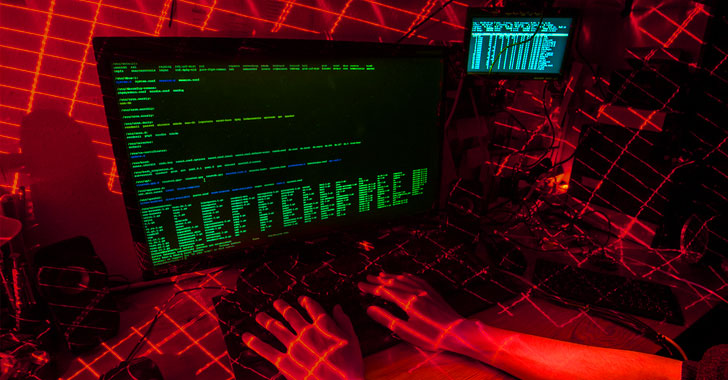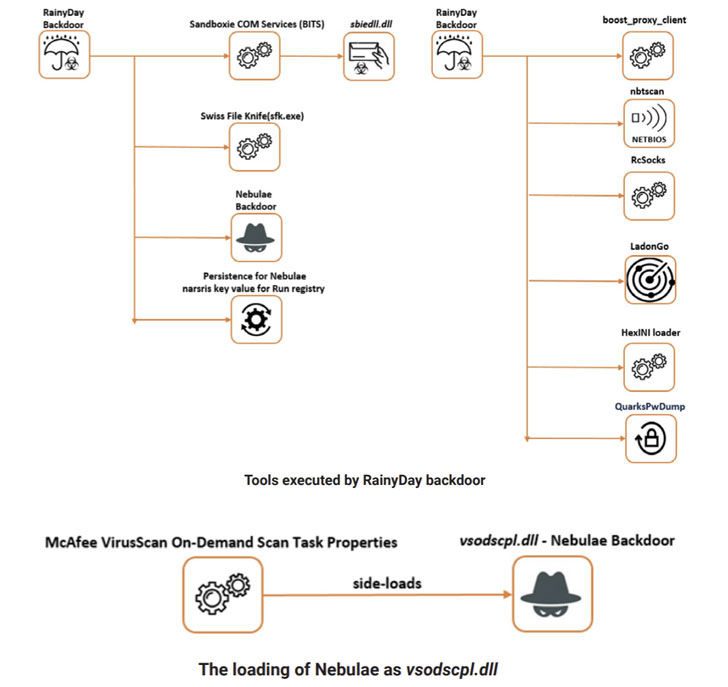Chinese Hackers Attacking Military Organizations With New Backdoor
Cybersecurity researchers on Wednesday exposed a new cyberespionage campaign targeting military organizations in Southeast Asia.
Attributing the attacks to a threat actor dubbed "Naikon APT," cybersecurity firm Bitdefender laid out the ever-changing tactics, techniques, and procedures adopted by the group, including weaving new backdoors named "Nebulae" and "RainyDay" into their data-stealing missions. The malicious activity is said to have been conducted between June 2019 and March 2021.
"In the beginning of the operation the threat actors used Aria-Body loader and Nebulae as the first stage of the attack," the researchers said. "Starting with September 2020, the threat actors included the RainyDay backdoor in their toolkit. The purpose of this operation was cyberespionage and data theft."
Alleged to be tied to China, Naikon (aka Override Panda, Lotus Panda, or Hellsing) has a track record of targeting government entities in the Asia-Pacific (APAC) region in search of geopolitical intelligence. While initially assumed to have gone since 2015, evidence emerged to the contrary last May when the adversary was spotted using a new backdoor called "Aria-Body" to stealthily break into networks and leverage the compromised infrastructure as a command-and-control (C2) server to launch additional attacks against other organizations.
The new wave of attacks identified by Bitdefender employed RainyDay as the primary backdoor, with the actors using it to conduct reconnaissance, deliver additional payloads, perform lateral movement across the network, and exfiltrate sensitive information. The backdoor was executed by means of a technique known as DLL side-loading, which refers to the tried-and-tested method of loading malicious DLLs in an attempt to hijack the execution flow of a legitimate program like Outlook Item Finder.
As an extra precaution, the malware also installed a second implant called Nebulae to amass system information, carry out file operations, and download and upload arbitrary files from and to the C2 server. "The second backdoor [...] is supposedly used as a measure of precaution to not lose the persistence in case any signs of infections get detected," the researchers said.
Other tools deployed by the RainyDay backdoor include a tool that picks up recently changed files with specific extensions and uploads them to Dropbox, a credential harvester, and various networking utilities such as NetBIOS scanners and proxies.
What's more, Bitdefender said RainyDay is likely the same malware that Kaspersky disclosed earlier this month, citing similarities in the functionality and the use of DLL side-loading to achieve execution. Called "FoundCore," the backdoor was attributed to a Chinese-speaking actor named Cycldek as part of a cyberespionage campaign directed against government and military organizations in Vietnam.
Source: feedproxy.google.com
 Reviewed by Anonymous
on
3:30 AM
Rating:
Reviewed by Anonymous
on
3:30 AM
Rating:









